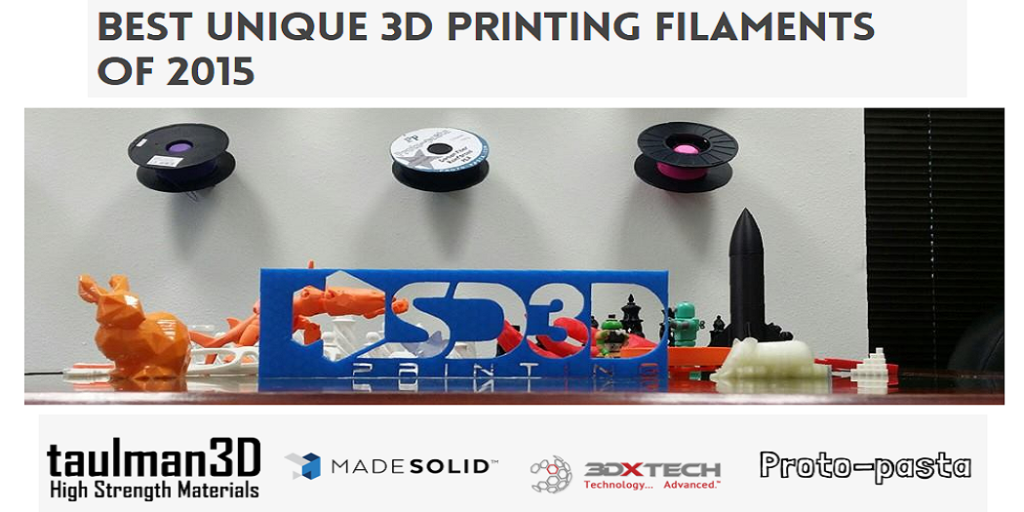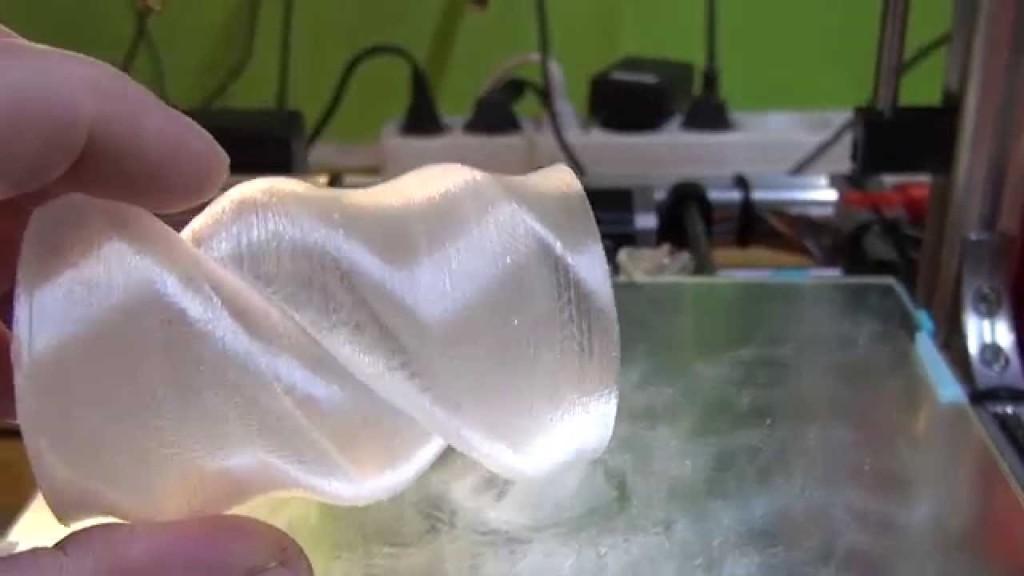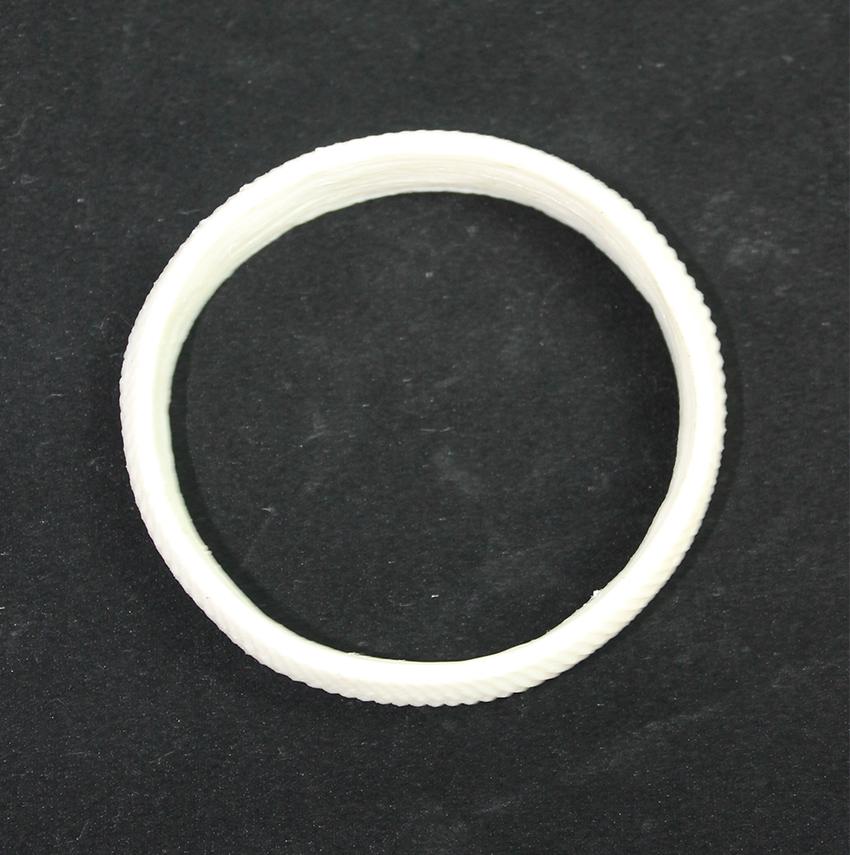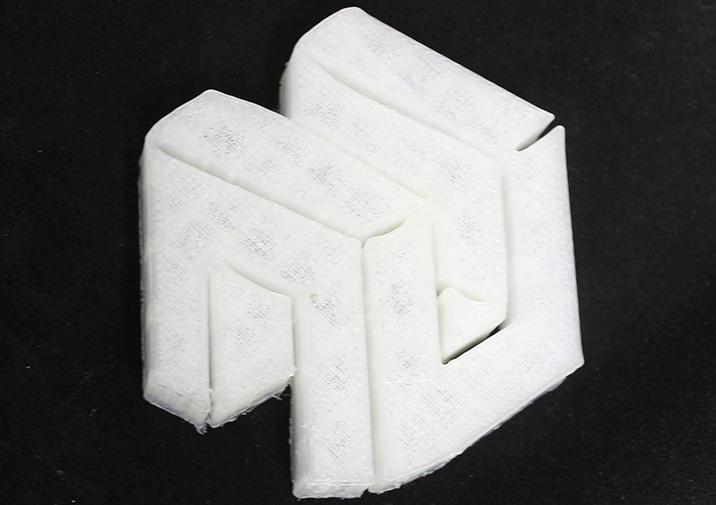 Once you’ve attained the foundation of a solid 3D printer that meets your various and sundry making needs, it’s time to fill it with fuel. And if you thought the choices were overwhelming in trying to figure out navigating purchases in machinery, today it often seems like you need a masters in materials sciences just to figure out what to feed your hungry hardware. Luckily, most makers are a busy lot and enjoy sharing not just their innovations in the open-source community that’s transforming the creative world, but they also enjoy telling you what went right–and what wrong–with specific filament.
Once you’ve attained the foundation of a solid 3D printer that meets your various and sundry making needs, it’s time to fill it with fuel. And if you thought the choices were overwhelming in trying to figure out navigating purchases in machinery, today it often seems like you need a masters in materials sciences just to figure out what to feed your hungry hardware. Luckily, most makers are a busy lot and enjoy sharing not just their innovations in the open-source community that’s transforming the creative world, but they also enjoy telling you what went right–and what wrong–with specific filament.
Today, SD3D, a company of experienced 3D printing enthusiasts in San Diego, is all about their favorites as they look back on this year. This is an innovative group, to say the least–from their 3D printing farm concept to their adaptive build environment software and more, in terms of information and reviews as well with their recent 411 on 3D printers and accompanying heated build plates.
 As a new year of marketing and materials are soon to roll out, SD3D looks at what has really been working in 2015–and there are lots of names you’ll probably recognize, as we did. For SD3D, they make information like this their business not only because they want to share it, but also because they want to apply it to their own purposes in 3D printing–and in this industry, that’s the best kind of information sharing.
As a new year of marketing and materials are soon to roll out, SD3D looks at what has really been working in 2015–and there are lots of names you’ll probably recognize, as we did. For SD3D, they make information like this their business not only because they want to share it, but also because they want to apply it to their own purposes in 3D printing–and in this industry, that’s the best kind of information sharing.
It’s no surprise to see that taulman3D tops the list and rocks it as well with the majority of materials SD3D found to be best. While taulman3D did leave room for a few others, here’s what we saw from them:
 Blueprint (Strength: ~5000 PSI, Elongation: ~8%, Tg: 110°C) – this is referred to as a specialty co-polymer, and is meant for high-heat applications, with a a Tg of 110C which is approximately 20 degrees higher than typical ABS filaments. In SD3D’s experience with Blueprint, they were able to fabricate parts ‘flawlessly’ at speeds of up to 120mm/s at 0.2mm layer heights on a standard 0.6mm E3D hotend. The team pointed out that optimal extrusion temperature was 285°C at those speeds, with parts adhering ‘perfectly’ at 110°C.
Blueprint (Strength: ~5000 PSI, Elongation: ~8%, Tg: 110°C) – this is referred to as a specialty co-polymer, and is meant for high-heat applications, with a a Tg of 110C which is approximately 20 degrees higher than typical ABS filaments. In SD3D’s experience with Blueprint, they were able to fabricate parts ‘flawlessly’ at speeds of up to 120mm/s at 0.2mm layer heights on a standard 0.6mm E3D hotend. The team pointed out that optimal extrusion temperature was 285°C at those speeds, with parts adhering ‘perfectly’ at 110°C.
“While there is a nylon component in this co-polymer, it’s dye uptake is poor and requires conventional priming and painting if you want colored parts,” stated SD3D. “Aesthetic considerations aside, this material is our go-to choice for industrial grade parts. We would feel very comfortable using these parts in demanding automotive and aviation applications.”
PCTPE (Plasticized Copolyamide Thermoplastic Elastomer / Strength: 5046 PSI, Elongation: 497.6%, Tg: 74°C) – according to SD3D this is regarded as ‘another amazing material by taulman 3D.’ Combining fantastic flexibility with durability, they point out that this offers excellent interlayer adhesion. Recommended for printing at 60mm/s at 0.2mm layer heights using the 0.6mm E3D nozzle, SD3D found the best results with extrusion temps at 240°C.
While pointing out that this is tricky to keep adhered to the build plate and the brim is also very difficult to remove, the SD3D team chose this as their favorite elastomer for industrial applications. Superior for producing high impact parts that will endure heavy loads, the PCTPE material is available in clear only but can be dyed with standard colors.
t-glase (Strength: 4516 PSI, Elongation: 7.8%, Tg: 76°C) – another very well-known material by taulman3D, this offers an excellent substitute to ABS, and can achieve much higher tensile properties. They point out that it has an ultimate tensile strength when printed of 4500PSI and 7.8%+ elongation to break–and that is where it will outperform ABS–but has a lower glass transition temperature. Because of this, while SD3D recommends t-glase for 3D models that will be outside, they warn that it could be problematic in a very hot environment; for instance, melting could occur if it were next to machinery exuding high temperatures.
t-glase is also recommended due to its optical clarity and good layer adhesion, but be prepared for difficulty in brim removal as well as with parent support removal.
Bridge (Strength: 4800 PSI, Elongation: 248.2%, Tg: 52°C) – also from taulman3D, this material was created to reduce shrinkage in FDM 3D printing. The SD3D team points out that it’s very important to print on a glass bed, however.
“This is a very welcome advancement in the state of nylon since all other samples we have tried have been very difficult to print without bed adherence or corner warping issues on typical heated bed configurations,” says SD3D.
Nylon 680 (Strength: 5,188 PSI • Elongation: 186% • Tg: 52°C) – yet another taulman3D product, Nylon 680 is not a material that’s been well-tested by SD3D yet, but it’s notable in that it is FDA approved, with no additives or toxins found in the material or exuded during fabrication.
Nylon 910 (Strength: 8100 PSI, Elongation: 32%, Tg: 82°C) is the last on the list for taulman 3D favorites, made to reach an ultimate tensile strength of 8100PSI with 32% elongation to break.
“Nylon 910 is the absolute highest strength material we have ever printed with,” says SD3D. “…To top that off, alloy 910 also has the lowest rate of water absorption of any of the nylons we tested and a very low shrinkage rate of 0.33 percent.”
They point out that it’s a perfect filament for small ABS parts requiring intense durability. SD3D was able to 3D print parts up to around 10 cubic inches without significant warping on a glass bed that was heated to 50°C and treated with the same PVA solution used for PCTPE.
PET+ (Strength: 6640 PSI, Elongation: 18%, Tg: 82°C) – this is manufactured by another well-known, MadeSolid, and well suited to making high-impact parts. It’s also available in a variety of colors, adding to versatility, and offering itself as a good replacement for ABS. SD3D does point out that it’s not suitable in service temperatures of approximately 70°C.
“We were pleasantly surprised at the ease of printing when starting out with PET+. It is nearly as simple to print with as PLA with minimal tendency to warp and high adhesion to heated glass or PEI at 75C,” stated SF3D. “This was particularly helpful when printing out large format prints that would typically be difficult to print with ABS.”
FlexSolid (Strength: 7250 PSI, Elongation: 450%, Tg: 74°C) – another material by MadeSolid, this is a notable in that SD3D points out it is the closest thing to rubber that they have worked with. With super high elongation yet a low durometer rating, they point out it must be printed slowly, and on a direct drive extruder–but that the results were very reliable.
“We were able to create functional GT3 belts with tooth counts that cannot be readily purchased off-the-shelf,” said SD3D. ”From what we can tell the color selection is limited to a semi translucent white. It seems extremely difficult to print support material and would not be preferred for any complex model.”
PORO-LAY – this is a filament that SD3D points out consists of an elastomer and a soluble component. It becomes extremely flexible in post-processing and can be manipulated into something almost like soft cloth. SD3D found this material to be difficult to work with, however, and does not recommend it if you are 3D printing complex parts. It requires a very slow speed and more cooling time, with
CF-ABS (Strength: 8500 PSI, Elongation: 2.17%, Tg: 90°C) – manufactured by 3DXTech, this is another material that the SD3D crew found to be ‘amazing.’ Worth checking out, this material from 3DXTech offers an incredible tensile strength of 8000PSI and is easier to print with than ABS, according to SD3D.
They use this primarily when making components for drones, as well as creating components for robots. This is the material to use if you need great strength but ‘low deflection and weight.’ It offers better surface quality and can be printed at standard ABS speeds. They do point out that it is more brittle than ABS or PLA, and that this material can also wear out your extrusion nozzle more quickly.
Carbon Fiber PLA (Strength: ~8400 PSI, Elongation: 1.2%, Tg: 56°C) – made by Protoplant, this is from the lineup of Proto-Pasta filaments. Composed of superior PLA and 15% carbon fiber, the SD3D team finds it easy to use, and reports that it does not warp easily. The SD3D design team uses this for 3D printing drone arms and large prints.
PC-ABS (Strength: 5050 PSI, Elongation: 4.3%, Tg: 125°C) – an ‘exotic material’ by Protoplant, this is an alloy that SD3D finds to offer the best of both worlds when comparing ABS and PLA, with the highest heat resistance of any polymer.
“When undergoing the vapor smoothing process, the PC and ABS components actually appear to separate and create internal flowing channels of homogeneous material,” says SD3D. “We have not found an application for that particular reaction at the moment, but it is very interesting experiment for anyone who has a vapor smoothing station set up for ABS.”
SD3D has done everyone a pretty great service by not only trying out all these materials but reporting back on them so fastidiously, conveniently leaving a lot of the guesswork out of the picture for many of us, and allowing us to save inestimable amounts of time learning from their experiences beforehand. We hope they stay just as busy in 2016, and will also hope these reports are annual. As SD3D points out, material suppliers seem to be ‘accelerating’ their research and development plans, so there should be a lot to continue to look forward to as the new year ensues.
You can read SD3D’s full filament review here, and feel free to give us your opinion in the SD3D Filament Review forum thread at 3DPB.com.
Subscribe to Our Email Newsletter
Stay up-to-date on all the latest news from the 3D printing industry and receive information and offers from third party vendors.
You May Also Like
3D Printing Unpeeled: New Arkema Material for HP, Saddle and Macro MEMS
A new Arkema material for MJF is said to reduce costs per part by up to 25% and have an 85% reusability ratio. HP 3D HR PA 12 S has been...
3D Printing News Briefs, January 20, 2024: FDM, LPBF, Underwater 3D Printer, Racing, & More
We’re starting off with a process certification in today’s 3D Printing News Briefs, and then moving on to research about solute trapping, laser powder bed fusion, and then moving on...
3D Printing Webinar and Event Roundup: December 3, 2023
We’ve got plenty of events and webinars coming up for you this week! Quickparts is having a Manufacturing Roadshow, America Makes is holding a Member Town Hall, Stratafest makes two...
Formnext 2023 Day Three: Slam Dunk
I’m high—high on trade show. I’ve met numerous new faces and reconnected with old friends, creating an absolutely wonderful atmosphere. The excitement is palpable over several emerging developments. The high...


































